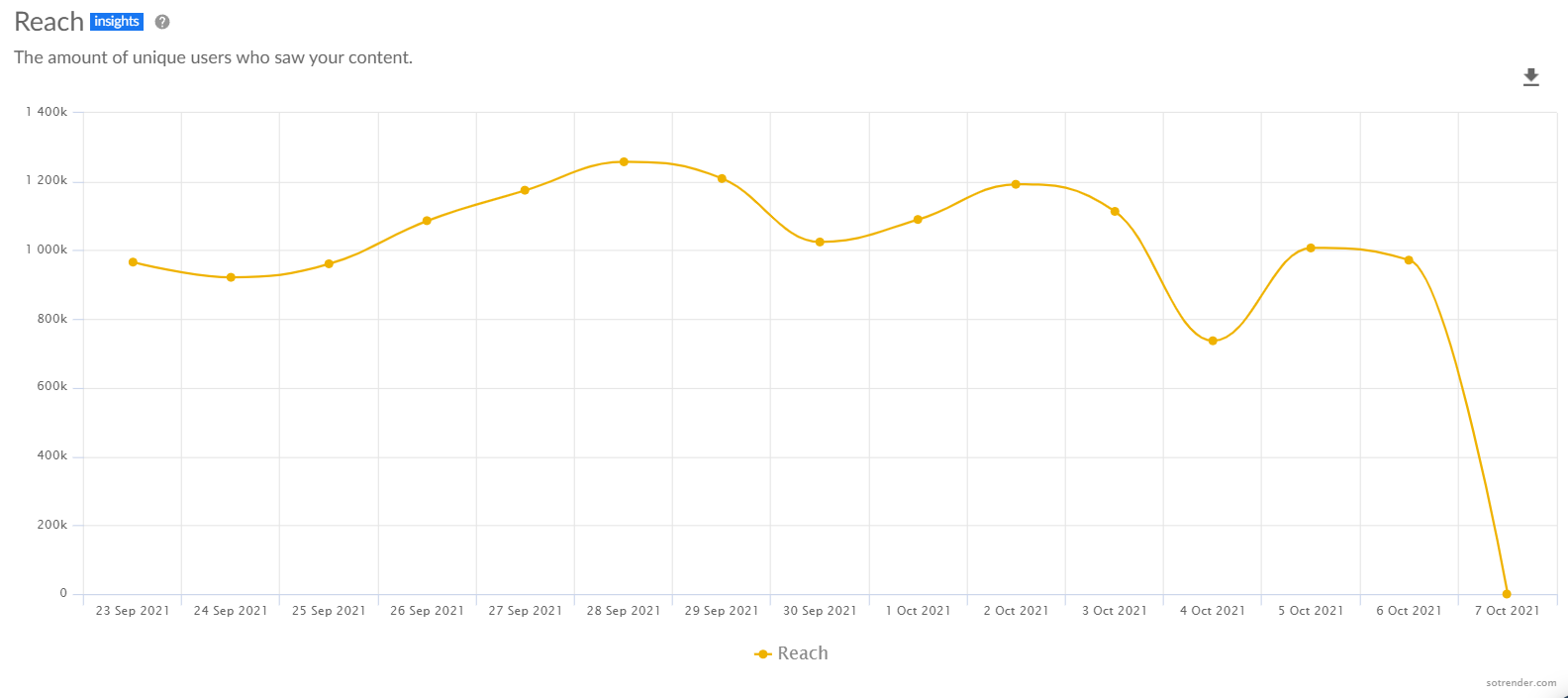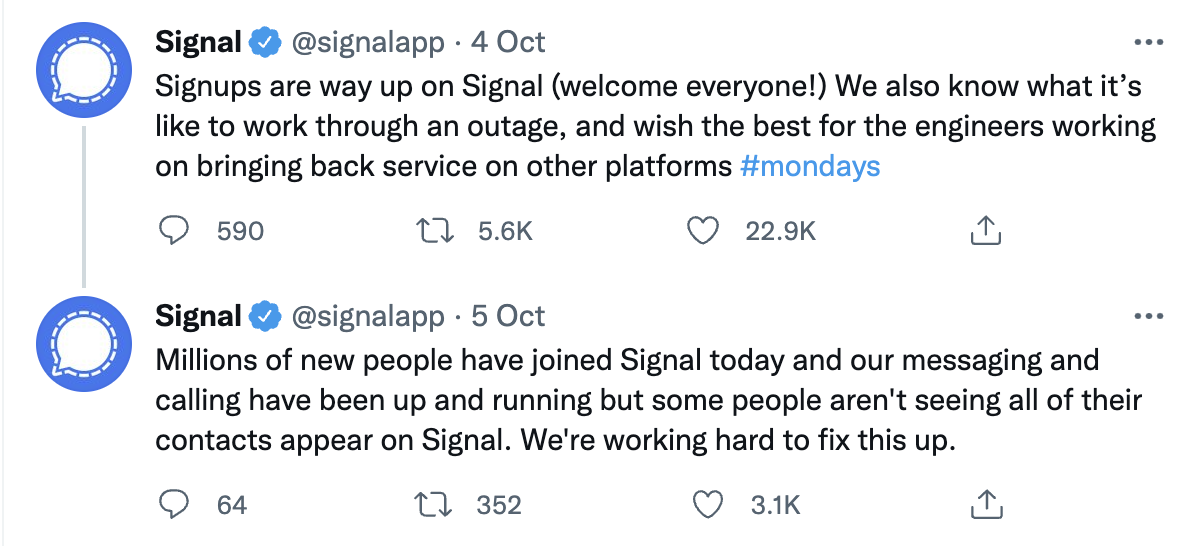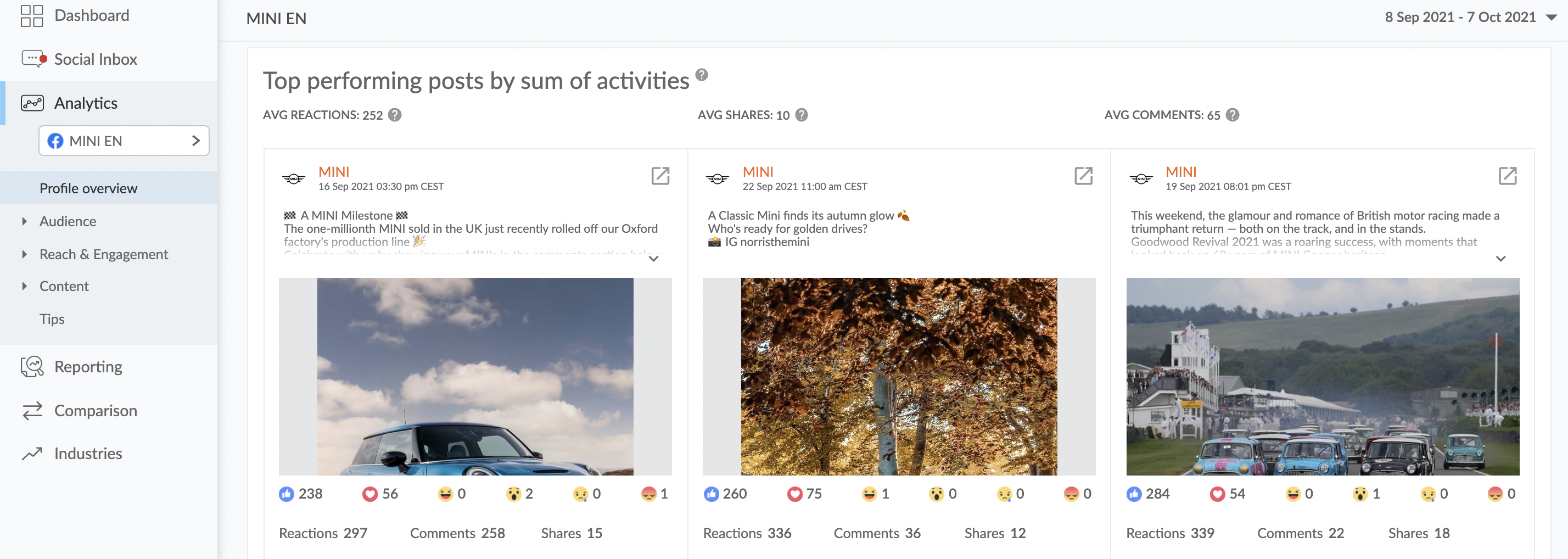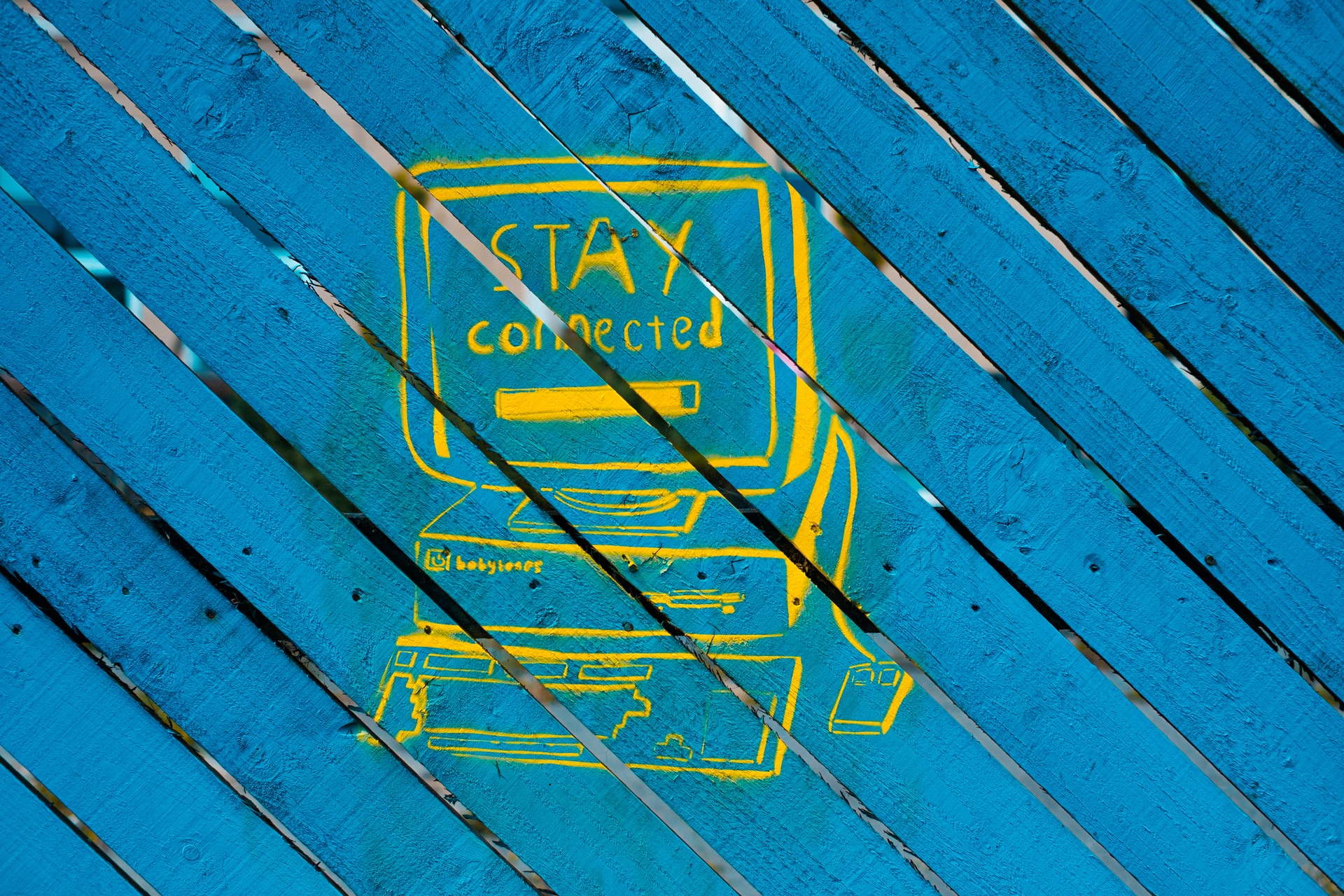On Monday, October 4th, we all experienced Facebook-owned social channels being unavailable. It made the majority of social media users feel insecure, but the situation impacted people working in the marketing industry even more.
I guess we’ve all stopped then for a while and thought “Aren’t we relying on Facebook, or other social media channels, too much?” Using social media for marketing purposes is relatively easy and accessible for almost everyone and everywhere, but there are obviously some drawbacks of this “free” solution.
Could we prevent such a situation in terms of it having less impact on our marketing activities and results? What can be done as for now? We’ve decided it’s definitely worth digging into these topics more.
What was the actual impact of #facebookdown on marketing campaigns
The situation made us, marketers, quite insecure: we didn’t know how much Facebook’s ecosystem unavailability would last and how big of an impact it would have on active campaigns. It was also not possible to get access to performance data in Business Manager, while at the beginning of the month many marketers needed to create monthly reports.
Even though Facebook was unavailable for approximately 6 hours (only?), we’ve been experiencing issues with using Facebook or Instagram for at least 2-3 days longer.
It was especially visible on Instagram, where Instagram Stories are the key format right now; they were displayed as if they were blank. Obviously, it affected all accounts, including influencers’ and brands’ profiles. Sometimes Instagram Stories (as well as regular posts) didn’t even appear to users at all. Even if they did, it often didn’t make sense to watch them, as half of them were empty.
No wonder that the situation significantly impacted the reach of the majority of Instagram and Facebook profiles, as presented in the example below.

An example of a brand’s profile on Instagram which suffered from decreased reach on October 4th-5th , data from the Sotrender app
How to prepare for a Facebook outage (or any other social media platform)
Can we prepare for the next Facebook outage and make our marketing activities less dependent on Facebook?
Yes, there are things that marketers and brands can start doing now to make their future campaigns and online presence more secure.
#1 Invest in channels that are not Facebook-dependent
This week’s crash impacted all Facebook services, meaning Facebook, Instagram, Messenger and WhatsApp. Obviously, not all social media channels belong to the Facebook ecosystem, so it’s definitely a good move to run at least one that simply isn’t owned by the giant from Menlo Park.
The range of choice is quite large, just to mention YouTube, Twitter, TikTok (which is the most downloaded application in the US at the moment), LinkedIn or Pinterest among the most popular ones.
Of course, you shouldn’t just choose a random one, or the one that is the most popular at the moment. Consider only those that you’re sure your target audience (primary or secondary) is using. It’s important also to remember that it’s not just about creating an account for it to have an impact – the communication there has to be run regularly. Managing several social channels, though, may not necessarily be a solution for smaller brands that often lack knowledge or sources for having additional channels.
The sad truth is, once Facebook or Instagram will be down again, users will be most probably still stuck to their smartphones. As we’re used to scrolling continuously and staring at our screens, chances are high that during the next such situation, we won’t be willing to leave our comfort, aka smartphone, zone.
A great example was what was happening on the official Twitter account on Twitter. These guys definitely took advantage of the Facebook ecosystem being down.
Just take a look at the impressive engagement one of Twitter’s tweets had on October 4th.

Twitter taking advantage of Facebook being down
Signal, the messaging app, also noted not only increased engagement on their Twitter account, but also increase in the usage of the app itself.

Signal app welcoming all new users
As they stated in one of their tweets, millions of new users started using Signal on Monday, October 4th, which caused some bugs due to this unexpected increase in the usage and interest in the app.
#2 Diversify your key communication channels
Brands should definitely go beyond running communication only on social media. Nowadays investing in media that your brand fully owns is a necessity – and this week’s crash is the best proof of that.
What are these channels?
Having your own website is quite obvious, but to be able to reach customers more directly, you should invest also in, for example, email marketing or SMS marketing (meaning also your own databases).
These channels are not dead, and noted an increase in usage during the Facebook crash.
As we can read in Mobile Marketing Magazine:
Three UK [telecommunication company] saw its largest volume of non-New Year’s Eve/Christmas traffic in more than 10 years, while there were six times as many MMS messages sent on its network compared to an average Monday.
We read further that:
In fact, between 8 and 9pm we carried more SMS [messages] than the last three New Year’s Eves – traditionally the busiest time for text.
The importance of such diversification was greatly summarized by Radek Zaleski from Netguru:
That’s why it’s so important to diversify channels and develop your own ones, incl. websites, web and mobile apps, podcasts, newsletters, etc.
You’ll always be dependent on 3rd party solutions, but developing your own infrastructure = minimizing their negative impact when things go bad.
Not to mention all the pros of having your own backup & disaster recovery plan.
How can you secure the constant growth of those additional channels?
- Link your channels between each other. For example:
– on Facebook you should have an active link to your website
– you should have active links to your website, podcast, or social media channels in your company email footer
– in your newsletter, you should have active links to social media channels & website
– on your website/ blog you should have a possibility to subscribe to your newsletter
- Run a lead generation campaign (for example on Facebook), during which you’ll obviously gather leads. However, what is most important, gather email addresses and phone numbers, which will allow you later on to do email marketing and SMS marketing campaigns.
These are simple but important steps to ensuring that your audience can easily find you. By having direct contact with your audience, you can be sure that they won’t miss important updates from your company.
Make sure you have a constant access to your data
As we’ve mentioned already, all Facebook-owned channels were unavailable, including Facebook Business Manager. What if you needed data about your performance for the past months? Or you needed this data to prepare a monthly report for your clients (remember, that it was the beginning of a new month)?
Again, if you use an external analytical app, like Sotrender, you can be sure your data is always safe, and available. No matter if it’s Facebook’s complete unavailability or a bug (which can happen definitely more often), by using Sotrender you can access your data anytime and generate a nicely-looking PDF report in just a few clicks.
Starting now, you can also analyze your paid campaigns, and report their performance.
Your reach has dropped? Here is what you can do
Due to such an unexpected situation, your reach (both paid and organic), could have definitely dropped. Depending on how long the blackout was (or will be in the future), the drop in your reach can be more or less significant for your monthly results.
Again, there are some tricks and ideas that you can use and implement to recover your KPIs.
Go for something that has proven efficiency
When it comes to publishing new content, it’s definitely a good time to go for something that you’re sure will work and has a proven track record, and will ensure you a peak in your reach or engagement. It’s definitely not time for testing new solutions or new content types that you’re not sure will work.
If you know which content usually performs much better than other posts on your profile – it’s a great time to use that knowledge.
How to check your top posts from the past months easily?
You can do that by using Sotrender, which is a social media analytical tool. Simply create an account, connect your Facebook or Instagram profile and head over to the Analytics section.

You can check your top posts by using the Sotrender app
Your top posts from the selected period of time will be automatically sorted from the ones that had the highest engagement.
Later on, you can dive deeper, and sort all your content by the number of comments, shares or reactions they had.
Post something that is very likely to get high engagement
You know which of your posts were performing the best lately, but you can also get inspired by your competitors’ content (yes, you can track their content and performance in Sotrender, as well).
Apart from that you can also take advantage of such unexpected situations by using real-time marketing. A great example is what Netflix posted:
When Instagram & Facebook are down. pic.twitter.com/mVFlVOOCOC
— Netflix (@netflix) October 4, 2021
The aim of posting even one piece of content that attracts users’ attention is to gather the highest engagement possible to get back on track with your performance.
A good meme is always a good idea, too. Just remember that it shouldn’t be something random. Keep it funny but relevant for your business and audience (treat your fans seriously).
It doesn’t even have to be something very sophisticated, just look at this simple, yet funny, tweet from Three UK:

Facebook crash, a side note
Especially if you work in a marketing or social media agency, or you’re a freelancer, you’ll often have to prove to your client that you’re the right person in the right place. Your client should, but not necessarily will, understand that such a situation, which we experienced last Monday, was beyond your control. Even though they understand, they’ll often expect you to fulfill the terms and conditions from the agreement you signed.
That’s why your creativity and flexibility matters a lot. If you manage to deliver the KPIs, especially in such an emergency situation, your client will definitely appreciate your effort.
Remember also to always have access to an analytical tool that you can rely on 100% and that will provide you accurate data that will backup your decisions and actions.





